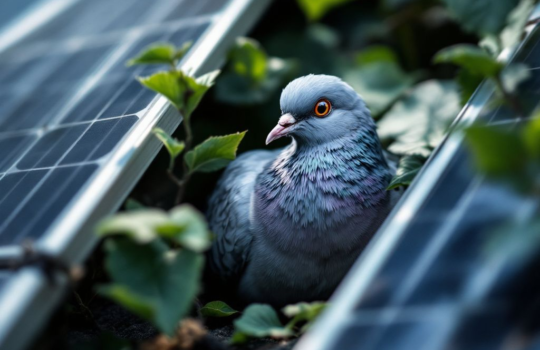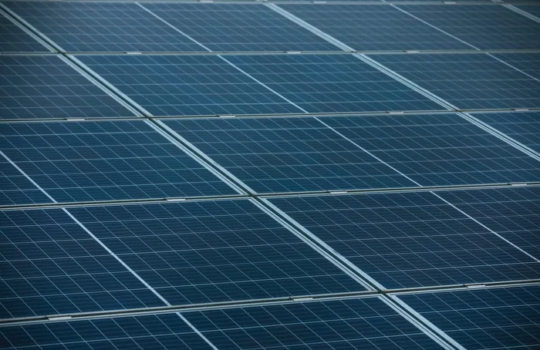Solar panels are a fantastic investment, providing clean and renewable energy while reducing our carbon footprint. However, the battle against the elements isn’t the only challenge solar panel owners face. Pests, such as birds, squirrels, and rodents, pose a significant threat to the efficiency and longevity of solar panel installations. In this blog post, we’ll explore the damaging impact of pests on solar panels and discuss effective strategies for protecting your investment.
1. Nesting and Damage
Pests are naturally attracted to the sheltered space beneath solar panels. Unfortunately, their presence can lead to various issues. Birds, in particular, are notorious for nesting under solar panels, using twigs, leaves, and other debris to build their nests. This nesting behavior not only obstructs sunlight but also poses a risk of physical damage. Birds may dislodge wiring, scratch panels, or create blockages that affect the panels’ performance.
2. Reduced Energy Production
Pests nesting under solar panels can have a detrimental effect on energy production. Debris, such as nesting materials, droppings, and feathers, accumulate over time, obstructing sunlight from reaching the solar cells. The reduced exposure to sunlight diminishes the panels’ ability to convert sunlight into electricity, resulting in decreased energy production and potentially lower financial savings on electricity bills.
3. Fire Hazards
Critters seeking shelter under solar panels often bring along flammable materials like twigs, leaves, or straw. In hot and dry climates, these materials can act as kindling, increasing the risk of fire hazards. Electrical wires may also be chewed on by rodents, potentially causing short circuits or electrical malfunctions that pose fire risks.
4. Increased Maintenance Costs
Keeping solar panels clean and functioning optimally requires regular maintenance. However, when pests infiltrate the space beneath the panels, maintenance becomes more challenging and time-consuming. Removing nests, debris, and cleaning up messes left behind by pests can significantly increase maintenance costs and take a toll on your valuable time.
Protecting Your Solar Panels from Pests
1. Install Wire Mesh: A highly effective strategy is to install wire mesh or bird netting beneath the solar panels. These physical barriers deter pests from accessing the space beneath the panels, preventing nesting and potential damage. Ensure the mesh is securely attached and covers the entire underside of the panels.
2. Implement Pest-Repelling Measures: Various pest-repelling devices and techniques can be employed to discourage pests from nesting. Ultrasonic devices emit sound frequencies that are unpleasant to pests, while motion-activated deterrents startle and discourage them. Additionally, visual deterrents, such as reflective surfaces or predator-shaped decoys, can be effective in deterring birds.
3. Trim Surrounding Vegetation: Keep trees and branches trimmed to minimize access points and discourage pests from jumping or flying onto your solar panels. Regularly clear away leaves, twigs, and other debris that may attract pests seeking nesting materials.
4. Schedule Professional Inspections: Regular inspections by professionals can help identify early signs of pest activity or potential damage. Experienced technicians can provide guidance on maintenance best practices and suggest additional measures to keep pests at bay.
Conclusion
Protecting your solar panel investment from pests is crucial for ensuring their optimal performance and longevity. By implementing preventive measures such as installing wire mesh, employing pest-repelling techniques, and regular maintenance, you can defend against the damaging impact of pests and maximize the benefits of your solar panels.
Remember, early intervention is key. Be proactive in monitoring and addressing any signs of pest activity to mitigate potential damage and minimize maintenance costs. With the right strategies in place, you can enjoy the full potential of your solar panels and embrace the sustainable benefits of clean energy for years to






